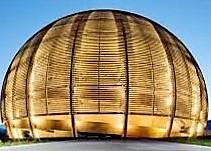Speaker
Description
$(\alpha,n)$ reactions provide a source for neutrons in many stellar environments, fueling the production of the heavy elements. The key $(\alpha,n)$ reactions for the $s$-process are thought to be $^{13}$C and $^{22}$Ne, but reactions on other nuclei, including $^{17,18}$O and $^{24,25}$Mg may also play important roles. In addition, $(\alpha,n)$ reactions are sources of background for neutrino and dark matter detection in ton scale systems, produced from the high energy $\alpha$ decays of trace actinides in support structures and the detection volumes. Recent new experimental studies have put the spotlight on the $^{13}$C$(\alpha,n)^{16}$O reaction, both through the measurement of new very low energy cross sections at underground facilities and by new types of measurements at higher energies, both of which resolve inconsistencies in past measurements. In this talk, I will review these latest measurements, discuss how they contribute to the overall evaluation over a wide energy range, and use a BRICK MCMC $R$-matrix analysis to estimate the effect of these new data on the extrapolation of the low energy $S$-factor to stellar energies. In particular, new measurements at the University of Notre Dame, 20 point angular distributions covering a center-of-mass range from 0.6 to 6.5~MeV using ODeSA, will be presented.
